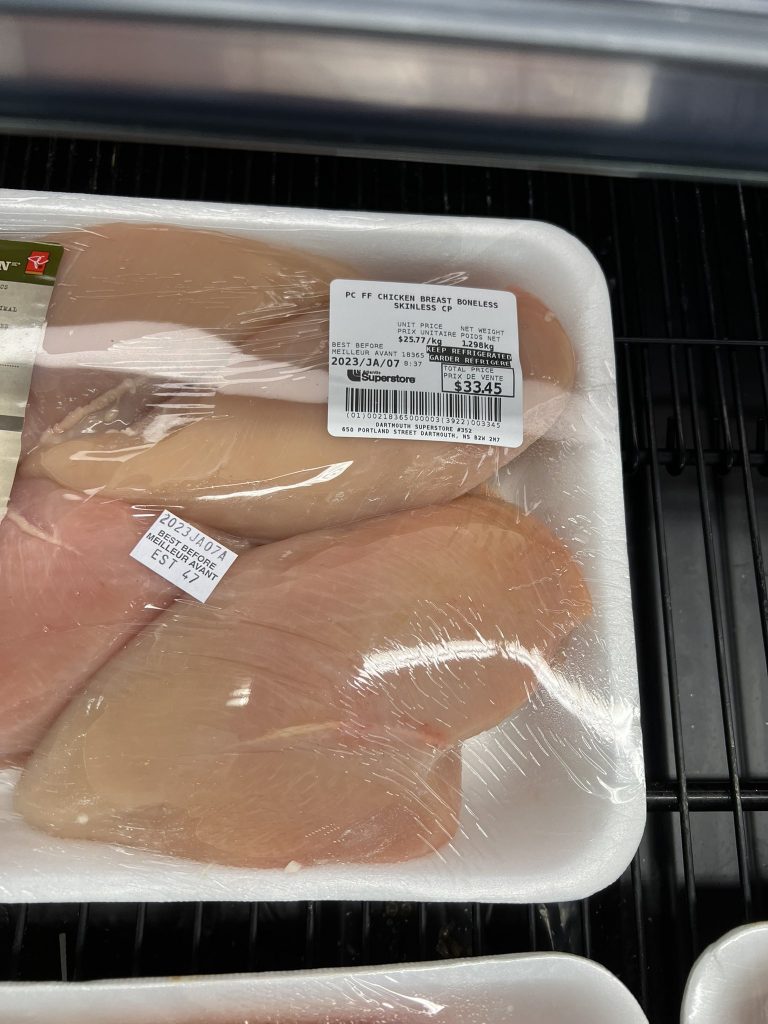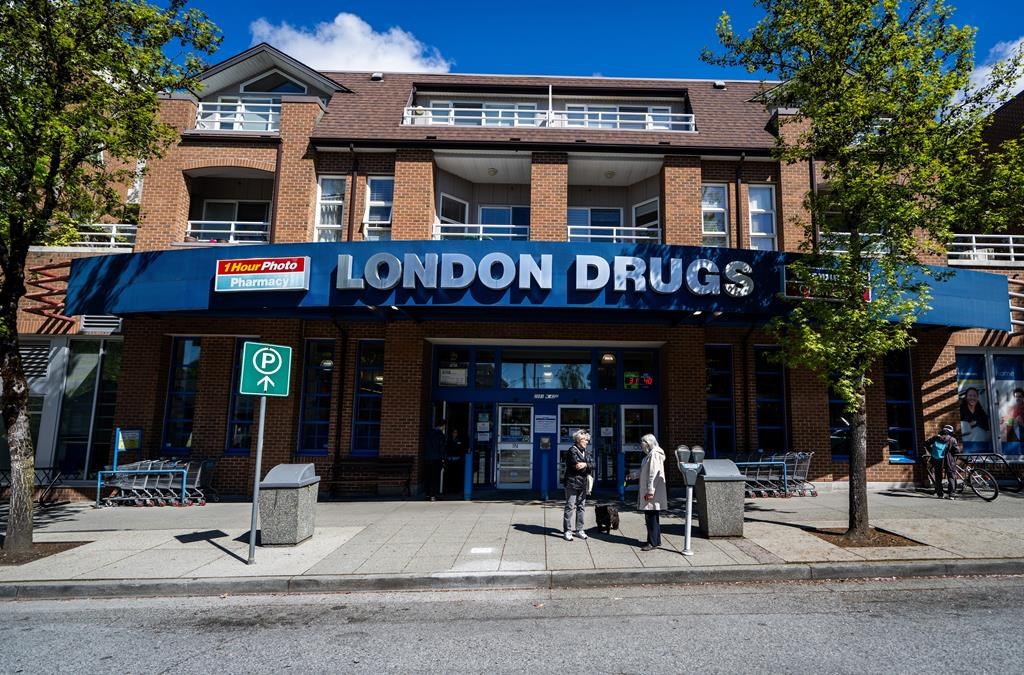Don’t be surprised by high food prices as picture of raw chicken goes viral

Posted January 5, 2023 7:24 am.
Last Updated January 5, 2023 8:00 am.
We’re not even a week into the New Year and Canadians are already feeling the pinch of paying more for groceries.
The financial hit is being felt after a picture of raw chicken went viral on social media.
The image was snapped at a Loblaw in the Greater Toronto Area and shows five skinless, boneless breasts being sold for just over $37. It does say “FF” on the label, meaning free from hormones and antibiotics. Another Twitter user replied to the tweet with a picture taken at Superstore showing four breasts being sold for just over $33.
I feel that went the other day it was 33.45 at our store for 4 pieces of chicken. pic.twitter.com/tFfJQ0hNnM
— Chris ™ (@chris_wilson0) January 4, 2023
Some people on the social media site are upset with Loblaw CEO Galen Weston. Others wonder if the grocer offers financing. Another says, “each cutlet better grant me three wishes.”
One Ontario-based MP says, “There’s no way Loblaws can justify this?”
Sylvain Charlebois with the Agri-Food Analytics Lab at Dalhousie University admits $37 is a lot for chicken but the “FF” labeling is just one reason why it may be so expensive. But he explains there’s another reason.
“The poultry industry has been impacted by several factors including the avian flu. Depending on where you live in the country, quotas are set by the province and each province will have its own reality and in Ontario, where the picture was taken, they are several investigations that are ongoing right now affecting several farms. We had to cull over 5 million birds in Canada so far, so that’s 5 million birds that really didn’t reach the market so there are supply crunches.”
He says one alternative is pork, which is cheap right now, however, if you don’t eat that Charlebois has another solution. “If you show up at the grocery store and that price point is way too high, just walk away. Walk away. You’re not in the right store for you, so go somewhere else.”
each cutlet better grant me three wishes
— Jill_Krajewski on IG (@JillKrajewski) January 4, 2023
They offer financing.
— Steve Slaunwhite (@steveslaunwhite) January 4, 2023
As a chicken farmer I am only getting $2.25 per kg. They are selling it for $26 per kg! We know how is making the $$$ here
— Peter (@Peter49008658) January 4, 2023
Charlebois says the uproar over chicken prices is just one aspect of all this. He adds egg prices are also up for the same reasons above.
He suggests using apps, like Flashflood, FoodHero, and Too Good To Go, which are food rescue apps, which point you in the direction of food that can be purchased at a discount to avoid waste. “Sometimes those discounts can reach 50 per cent.”
Related Articles:
-
Grocery prices expected to remain high for first half of 2023
-
Food prices in Canada rise at faster pace than overall inflation, 12 months in a row
-
B.C. rings in the New Year with new fees, higher expenses
If you see something on sale, he says it’s a good idea to stock up a little and pack it in your freezer for future use.
He says the price of meat, dairy, baked good and veggies will increase in, at least, the first six months of this year — give or take — before things calm down by no later than July.
Increased food prices
The most recent edition of Canada’s Food Price Report, put together by Charlebois, predicts grocery prices will rise between 5 and 7 per cent this year.
“The report forecasts that an average family of four, including a man (age 31-50), woman (age 31-50), boy (age 14-18), and girl (age 9-13) will spend up to $16,288.41 per year on food, an increase of up to $1,065.60 from what was observed in 2022.”
The report points to climate change, supply chain disruptions, carbon taxes, geopolitical climates, and rising transportation costs as just some of the reasons why prices are up.
In October of last year, Loblaw announced it was freezing prices on more than 1,500 of its No Name brand items until the end of January. In November, the grocer also posted a third-quarter profit of more than 30 per cent compared to the previous year.
In a statement, Loblaw confirms to CityNews the picture of the chicken that went viral is “a Club Pack of President’s Choice Free From Chicken (per the PC FF on the label) which is a large format, premium chicken product.”
“The price per kilo is in line with, if not cheaper than, competitor pricing for similar premium products. Beyond the Free From line, we offer customers a variety of quality poultry at various price points including a 3-pack of PC boneless, skinless chicken breasts for $13 found in the same section of the store.
“In addition to general inflationary pressures, as I’m sure you are aware, the price of poultry has increased over the last year or so across North America for a number of reasons including demand and disease,” the company wrote.










